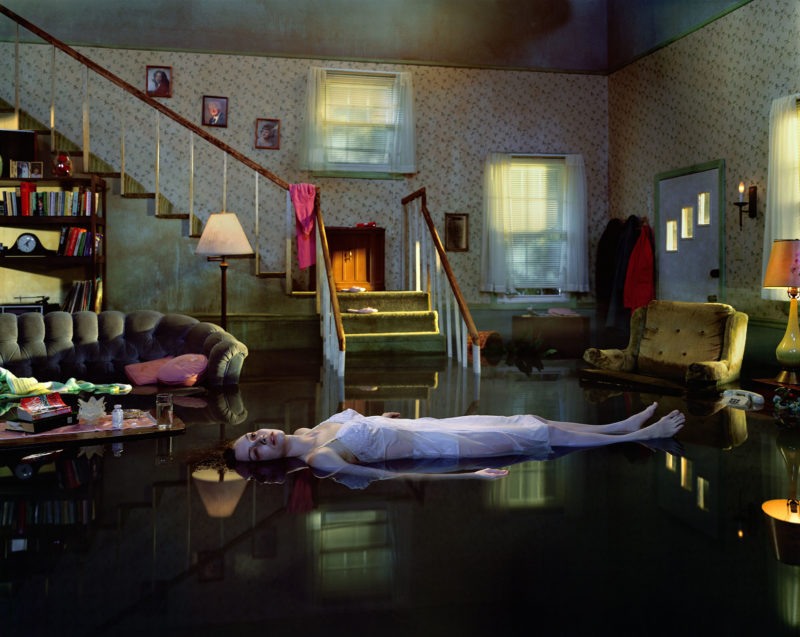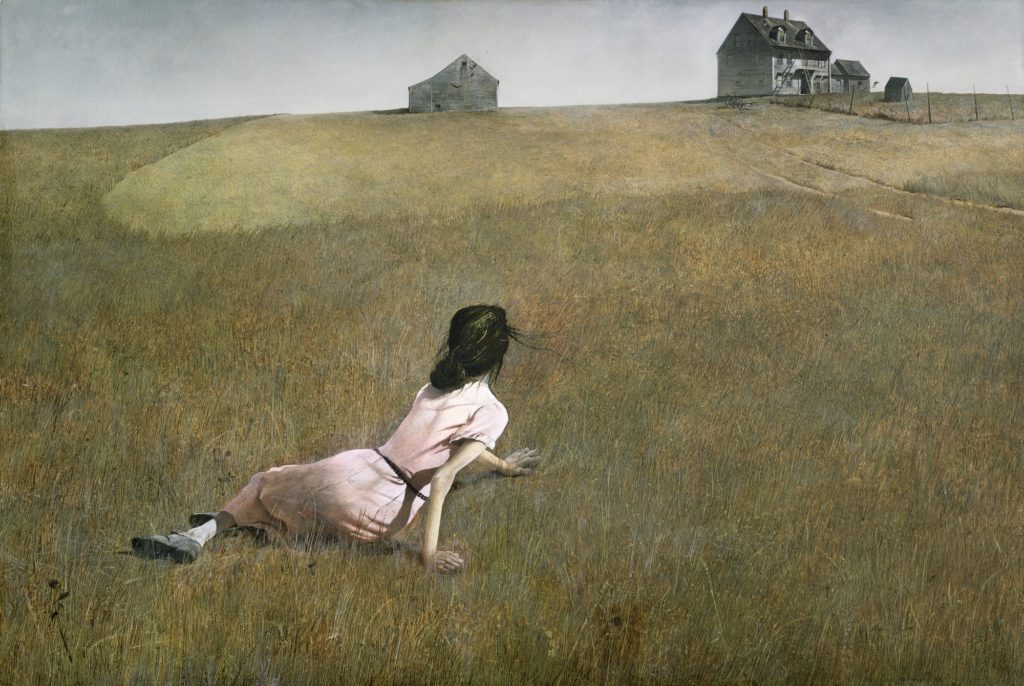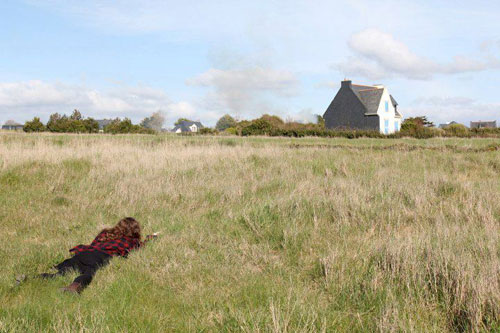WHAT IS A TABLEAU VIVANT?
Tableau vivant is french for ‘living picture’, and is a static scene containing one or more actors or models. They are stationary and silent, usually in costume, carefully posed, with props and/or scenery, the setting may also be theatrically lit. It works to combine both theatre and the visual arts. A tableau photograph can be achieved through staged photography, where a scene is set up, with models, posed, artificially purposefully lit, propped, set designed by the person taking the photo.
EXAMPLES:

Jeff Wall recreation of Katsushika Hokusai – Suruga Ejiri 
Katsushika Hokusai – Suruga Ejiri

Gregory Crewdson : Untitled (Ophelia) from Twilight

Christina’s World, 1948 painting by Andrew Wyeth 
“Christinas World” by Andrew Wyeth, remade by Daryl Seitchik.
HISTORY OF TABLEAU PHOTOGRAPHY:
‘Tableau Vivant’ was first used in the eighteenth century by French philosopher Denis Diderot to describe paintings with a certain type of composition. Tableau paintings were natural and realistic, and had the effect of walling off the observer from the drama taking place.
In the 1860s, the concept of tableau reached a crisis with Édouard Manet, a French modernist painter, decisively rejected the idea of tableau as suggested by Diderot, in his desire to make paintings that were realistic rather than idealised. He painted his characters facing the viewer with a new vehemence that challenged the beholder. In the 1970s, a group of aspiring young artists such as Jeff Wall and Andreas Gursky began to make large format photographs that resembled paintings, that were designed to hang on a wall. As a result these photographers were obliged to take on the very same issues revealing the continued importance of tableau in contemporary art.
TABLEAU VIVANT IN PAINTINGS:

Christ in the House of His Parents (‘The Carpenter’s Shop’) 1849-50 Sir John Everett Millais, a painting that categorised as a tableau. Bt 1829-1896
TABLEAU VIVANT PHOTOS AND PAINTINGS ALSO SHOW VARIOUS ASPECTS OF SYMBOLISM AND ALLEGORY:
Allegory in art is when the subject of the artwork, or the various elements that create the composition, is used to symbolise a deeper moral or spiritual meaning such as life, death, love, virtue, justice etc. Allegory is clearly represented in the ‘Christ in the House of His Parents‘ by John Everett Millais.
This is Millais’s first important religious subject, showing a scene from the boyhood of Christ. Exhibited at the Royal Academy in 1850, it was given no title, but accompanied by a biblical quotation: ‘And one shall say unto him, What are those wounds in thine hands? Then he shall answer, Those with which I was wounded in the house of my friends.’ (Zech. 13:6).
Christian symbolism is prominent in the painting:
- The carpenter’s triangle on the wall above Christ’s head, symbolises the Holy Trinity.
- The wood and nails prefigure the crucifixion
- The young St John is shown fetching a bowl of water with which to bathe the wound. This clearly identifies him as the Baptist
